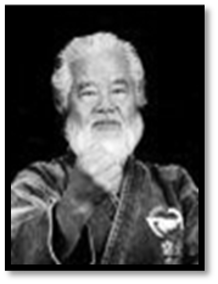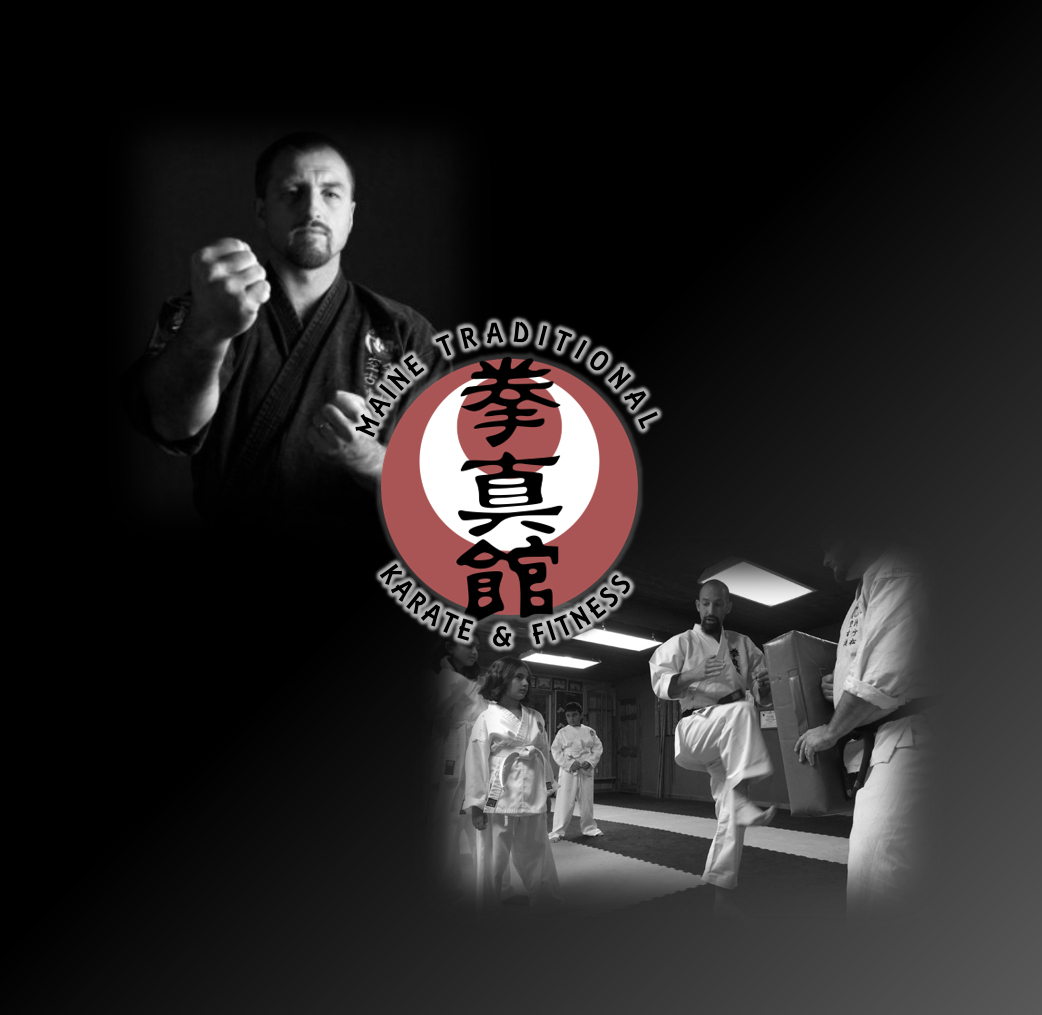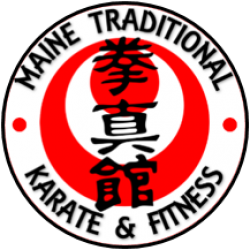 The Okinawa Shorinryu Matsumura Seito Karate and Kobudo Federation has a rich history going back centuries. Karateka will be expected to know who the teachers in their lineage are come testing.
The Okinawa Shorinryu Matsumura Seito Karate and Kobudo Federation has a rich history going back centuries. Karateka will be expected to know who the teachers in their lineage are come testing.
OSMKKF is a worldwide federation that is overseen by Grandmaster Fusei Kise and his son Kaicho Isao Kise from their home dojo in Okinawa. There are at least 30 active chartered dojos worldwide with black belt ranking members regularly convening at annual camps to collaborate.
The biographical information in our lineage below is provided purely for educational use for those that would like to know more about their teachers and the history of the art.
 Satonushi Sakugawa (1733-1815)
Satonushi Sakugawa (1733-1815)  Bushi Matsumura (1797-1889)
Bushi Matsumura (1797-1889)  Nabe Matsumura (1860-1930)
Nabe Matsumura (1860-1930)  Master Hohan Soken (1889-1982)
Master Hohan Soken (1889-1982)  Grand Master Fusei Kise
Grand Master Fusei Kise  Kaicho Isao Kise
Kaicho Isao Kise  Hanshi John Shipes
Hanshi John Shipes  Sensei Steve Apsega
Sensei Steve Apsega Satonushi Sakugawa (1733-1815)
From Wikipedia Article:
In 1750, Sakukawa (or Sakugawa) began his training as a student of a Ryūkyūan monk, Peichin Takahara. After six years of training, Takahara suggested that Sakugawa train under Kusanku, a Chinese master in Ch’uan Fa. Sakugawa spent six years training with Kusanku, and began to spread what he learned to Ryūkyū in 1762. He became such an expert that people gave him, as a nickname: “Tōde” Sakugawa (Sakugawa “Chinese Hand”). His most famous student, Matsumura Sōkon, went on to develop the Shuri-te which later develop into Shōrin-ryū style of karate.
Bushi Matsumura (1797-1889)
From Wikipedia article:
Matsumura Sōkon was born in Yamagawa Village, Shuri, Okinawa. Matsumura began the study of karate under the guidance of Sakukawa Kanga. Sakukawa was an old man at the time and reluctant to teach the young Matsumura, who was regarded as something of a troublemaker. However, Sakukawa had promised Kaiyo Sōfuku, Matsumura Sōkon’s father, that he would teach the boy, and thus he did. Matsumura spent five years studying under Sakukawa. As a young man, Matsumura had already garnered a reputation as an expert in the martial arts.
Matsumura was recruited into the service of the Shō family, the royal family of the Ryūkyū Kingdom in 1836 and received the title Shikudon (also Chikudun Pechin), a gentry rank. He began his career by serving the 17th King of Ryūkyū’s second Shō dynasty, King Shō Kō. In 1838 he married Yonamine Chiru, who was a martial arts expert as well. Matsumura eventually became the chief martial arts instructor and bodyguard for the Okinawan King Shō Kō. He subsequently served in this capacity for the last two Okinawan kings, Shō Iku and Shō Tai. Matsumura traveled on behalf of the royal government to Fuzhou and Satsuma. He studied Chuan Fa in China as well as other martial arts and brought what he learned back to Okinawa.
He was the first to introduce the principles of Satsuma’s swordsmanship school, Jigen-ryū, into Ryūkyū kobujutsu (Ryūkyūan traditional martial arts) and he is credited with creating the foundation for the bōjutsu of Tsuken. He passed on Jigen-ryū to some of his students, including Ankō Asato and Itarashiki Chochu. The Tsuken Bō tradition was perfected by Tsuken Seisoku Ueekata of Shuri.
Matsumura is credited with passing on the Shōrin-ryū Kempō-karate kata known as naihanchi I & II, passai, seisan, chintō, gojūshiho, kusanku (the embodiment of kusanku’s teaching as passed on to Tode Sakugawa) and hakutsuru. The hakutsuru kata contains the elements of the Fujian White Crane system taught within the Shaolin system which was created by Fang Qiniang after destroying the gang who murdered her father Fang Zhonggong (Fang Shiyu). Lin Shixian was a Master of Black Crane and Eighteen Fist Monk Boxing. One of his Masters was Fang Zhonggong. He helped train Fang Quinang to defeat the gang who killed her father. Kwan Pang Yuiba (1828-1912) became master of Shaolin White Crane in the temple and supplanted Black Crane in 1837 as the official Temple Crane style, he was first student of Fāng Qīniáng.
Matsumura was given the title “bushi” meaning “warrior” by the Okinawan king in recognition of his abilities and accomplishments in the martial arts. Described by Gichin Funakoshi as a sensei with a terrifying presence, Matsumura was never defeated in a duel, though he fought many. Tall, thin, and possessing a pair of unsettling eyes, Matsumura was described by his student Ankō Itosu as blindingly fast and deceptively strong. His martial arts endeavors have been the progenitor of many contemporary karate styles: Shōrin-ryū, Shotokan, and Shitō-ryū, for example. Ultimately, all modern styles of karate that evolved from the Shuri-te lineage can be traced back to the teachings of Bushi Matsumura. Of note, his grandson was the modern Tōde master, Tsuyoshi Chitose, who assisted Gichin Funakoshi in the early introduction and teaching of karate in Japan and who founded the Chitō-ryū (千唐流 ?) style.
Nabe Matsumura (1860-1930)
From Wikipedia article:
Nabe Mastsumura, born 1860, was the grandson of Matsumura Sōkon, who founded the Shōrin-ryū style of karate. Being related to Sōkon meant that Nabe was privileged to extremely thorough training from his grandfather in the family’s style, as well as the secret White Crane system that was only taught to immediate family members.[1]
In his martial arts career as a sensei, Nabe had only one student: his nephew, Hohan Sōken. Upon his death in 1930, he passed his Menkyo Kaiden to Hohan Sōken, who continued the Matsumura family tradition by solidifying the Shōrin-ryū style of Matsumura Seito karate-do.
Master Hohan Soken (1889-1982)
From Wikipedia article:
He was born May 25, 1889 (although at least one text puts his birth year as 1891) in Nishihara, Okinawa.
He was the nephew of Nabe Matsumura (who was the grandson of Matsumura Sōkon). He began karate training at 13 under his uncle. Matsumura taught him several kata, including Naihanchi Shodan, Naihanchi Nidan, Naihanchi Sandan, Pinan Shodan, Pinan Nidan, Passai Sho, Passai Dai, Chinto, Kusanku, Gojushiho, Sesan, Rohai Jo, Rohai Chu, Rohai Ge, and finally at age 23, Hakutsuru. Soken has said in interviews that Kusanku is the most important kata to the style.
In 1924, Sōken emigrated to Argentina. While in Argentina, he worked as a photographer and clothes cleaner. He also taught karate to Japanese and Okinawan ex-pats in Buenos Aires. In 1952, he returned to Okinawa and started to teach karate, first to family members. Then he opened a small dojo to the public. At first, he called the style “Matsumura Shuri-te.” But in 1956, changed the name to Matsumura Seito Shōrin-ryū karate.
Hohan Sōken died on November 30, 1982 in Nishihara, Okinawa.
Among his students were Seiki Arakaki, Kohana Nakazato, Inoue, Masaya Kyan, Nishihira Kosei, Yuichi Kuda, Fusei Kise, Takaya Yabiku, James H. Coffman, and Ted Lange.
Grand Master Fusei Kise
From Kenshin Kan site:
Grand Master Kise has been training for well over 45 years. He holds a 10th Degree Black Belt in Kenshin Kan Shorin-Ryu and is the President of the All Okinawan Shorin Ryu Kenshin Kan Karate and Kobudo Federation. He is also a 9th Degree Black Belt in Okinawan Kempo and a 10th Degree Black Belt in Shorinji Ryu Karate. Grand Master Kise has Dojo’s (Schools) all over the world. His headquarters is located in Okinawa City, Okinawa Japan. Grand Master Kise makes trips to the United States once a year and also travels to other countries as well to teach the art of Kenshin Kan Shorin Ryu as well as Kobudo (Weapons) Training.
MASTER FUSEI KISE was born on May 4, 1935. He began his study of Karate in 1947 from his Uncle Master Makabe. In 1955 Master Kise became a student of Master Nobutake Shingake and receive his SHO DAN.
In 1958 Master Kise began studying under Grand Master Hohan Soken, the third successor of Shorin Ryu Matsumura Seito Karate-Do. In 1960 he was a student of Grand
Master Shigeru Nakamura, Okinawan Kenpo Karate-Do Federation and qualified for his 7th Degree Black Belt. After five years of training, Master Kise became a shihan or Master on January 1, 1965 when he passed the 7th Dan examination under Grand Master Shigeru Nakamura. At that time Master Kise taught and practice Shorinji Ryu Karate-Do. Also during this time he was studying Shorin Ryu under Grand Master Hohan Soken.On January 1, 1957 Master Kise switched completely over to the Shorin Ryu Matsumura Seito (Orthodox Karate- Do). On January 3, 1972 Master Kise qualified for the Hanshi title by passing the 8th Dan examination held by Grand Master Hohan Soken and Master Makabe. Sep 1st 1976 Master Kise qualified for his 9th Dan by Grand Master Hohan Soken. In 1977 Master Kise founded the Shorin Ryu Karate Kenshin Kan Karate and Kobudo Federation. On Oct 25 1987 Master Kise was promoted to 10th Dan by Master Shigaru Tamaiya.
In 2001 the Government of Japan gave there Seal of Approval to the accuracy of Master Kise’s book. They have stated that he (Grand Master Kise ) is the sole true heir to Matsumura Orthodox Karate, being passed down to him from Soken Sensei. This has been entered into the official Government Archives. This means there can be no more disputing the Lineage of Matsumura Orthodox Karate. It belongs to our Grand Master.
Kaicho Isao Kise
From Kenshin Kan site:
KAICHO Isao Kise is President of the All Okinawan Shorin Ryu Matsumura Seito (and Kenshin Kan) Karate and Kobudo Federation. He is the son of Grand Master Kise Fusei and his designated successor. Kaicho holds the rank of Kudan, 9th degree Black Belt. Kaicho (president) teaches at the Main Dojo, Okinawa City, Okinawa Japan. He was the All Okinawan Kata, Kobudo, and Kumite Grand Champion.
Kaicho teaches Traditional Karate, Sport Karate, Sport Kumite as well as full contact Karate. He is a senior judge for tournaments throughout the Island of Okinawa. Kaicho has been training since the age of 4 and was born July 27, 1957. Kaicho believes in hard demanding workouts and trains his students to be champions. Kaicho was promoted to the rank of Hachi Dan (8th Dan) on January 18th 1998.
Hanshi John Shipes
From Georgia Kenshin Kan site:
Hanshi John Shipes, US West Coast Director of the OSMKKF. Hanshi Shipes began his formal martial arts training in 1978 under Master Roy Kurban in Arlington, Tx in Tae Kwon Do, and trained there for about 4 years. He moved to Palestine, Tx in 1981 when he first met Steve Warren, a student of Master Kise’s, and trained with him for about 3 months.
He then joined the Cha Yon Ryu system of Master Kim Soo under instructor Ken Pickle, a more familiar Tae Kwon Do based system. This training continued for about a year when Sensei Shipes left Mr. Pickle’s school and returned to Sensei Warren’s school and has remained with Master Kise’s system ever since. Hanshi Shipes also Hosts an annual training camp dedicated just to practicing the art of tuite (joint locks).
Sensei Steve Apsega
Rokudan
Steve Apsega, began formal training in the Shorin Ryu Matsumura Seito Karate in 1986. Establishing his first Maine Traditional Karate dojo in Whitneyville, Maine in 1990, Sensei Apsega later opened dojos in Hermon (2000), Orrington (2003), and Old Town (2010). The sole break in Sensei Apsega’s decades of teaching experience came in 1994 – 1998 when he honorably served our country as an Airborne Certified United States Marine.
Upon discharge from the Marine Corp, Sensei Apsega reengaged in training and teaching the Shorin Ryu Matsumura Seito system. His continuing efforts earned him promotion to Nidan (2nd Degree Black Belt) on June 10, 2000, Sandan (3rd Degree Black Belt) on May 22, 2004, Yondan (4th Degree Black Belt) on May 16, 2009, and Godan (5th Degree Black Belt) on May 25th, 2013. Committed to accurately preserving the 300 year old karate system he practices, Sensei Apsega traveled to Okinawa Japan in 2004 and 2006 to personally train with Grandmaster Fusei Kise and Master Kise’s son, Kaicho Isao Kise.
On June 11, 2021 Sensei Steve traveled to Tyler, TX, and successfully tested for Rokudan (6th Degree Black Belt) with Hanshi John Shipes.
Sensei Apsega maintains his proficiency, in part, by regularly traveling to Athens, Texas to train with his teacher, Hanshi John Shipes. Hanshi Shipes, a Kyudan (9th Degree Black Belt), serves as Co-director of the United States Branch of Grandmaster Fusei Kise’s Okinawan Shorinryu Matsumura Seito Karate and Kobudo Federation (OSMKKF).
As a Senior Student of Hanshi Shipes, Sensei Apsega attends and assists his teacher in hosting Master Kise and Kaicho Isao Kise’s annual trainings in the United States. Through his ongoing professional development activities, Sensei Apsega maintains OSMKKF Full Instructor Certification in Karate, Kobudo, and Tuite. Sensei Steve has completed Kusanku and Sakagawa no Kon Sho, two of our system’s highest level katas.
Although you will never hear Sensei mention it, his Maine Traditional Karate students are proud of, and wholeheartedly support, the April 26, 2014 OSMKKF bestowal of the title Renshi (i.e., Polished Master) upon our Sensei.


